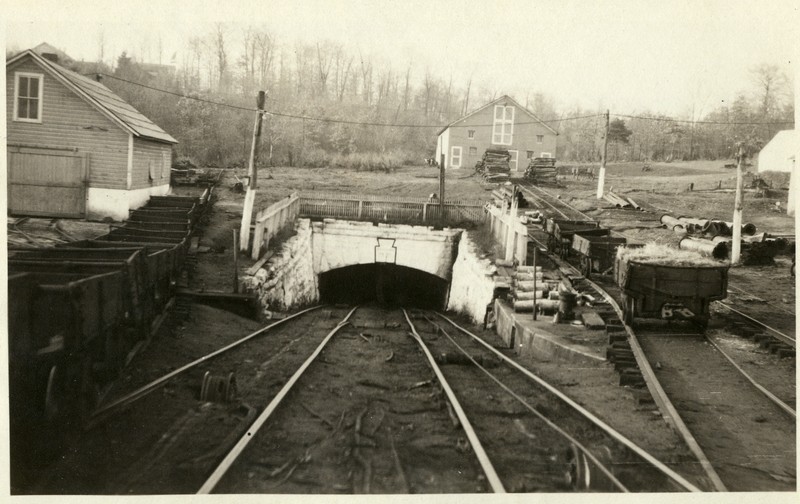Mining Underground in Thomas
Introduction
Text-to-speech Audio
The Thomas industrial complex drove employment, industry, & economic activity. Many coal mine entrances in and around the town of Thomas led to miles of interconnected underground mine tunnels. On the surface the river front was covered with six rows of train tracks, a mine tipple, and a power plant.
Images
Historical sign for underground mining
.jpg)
mine entrance in Thomas, WV

Backstory and Context
Text-to-speech Audio
There are two main systems of coal mining; open or strip mining, and tunneling or deep mining. Strip mining, which is a form quarrying, can only be used when the coal seam is near the surface of the ground. In deep mining, the coal seam is reached through vertical shafts, or through horizontal tunnels called drift and slope mines. The coal deposit is usually marked out in rooms, also called chambers or bords, which vary in size according to local conditions. The coal in the room is cut and blasted away, leaving pillars of coal to support the roof. In the "longwall" system of mining, the entire section of the seam is removed and the roof is allowed to settle, leaving only haulage tunnels clear of the subsiding debris. Power cutters have supplanted the traditional miner's pick. With them the miner makes an undercut about six inches wide and nine feet deep across the face of the coal seam, near the floor of the room. Then deep holes are drilled at the top of the face and blasting charges are tamped into them. The blast brings down and partially shatters a large chunk of the coal face, which is then loaded into low electrically-propelled trains and brought to the surface.
The two chief problems of deep mining are ventilation and timbering. Ventilation is particularly important since several dangerous gases are found in coal mines. Large fans and blowers must be used to maintain a circulation of pure air. Timbering is necessary to support the roofs of tunnels and work rooms. Metal props and masonry are used for this purpose, as well as heavy wooden supports, which are set in place as the work advances.
Sources
Fansler, Homer Floyd. History Of Tucker County. 1962. Parsons, W.Va.: McClain Printing Company, 1993. Print.
Friends of Blackwater
WV Regional & Historical Collection
